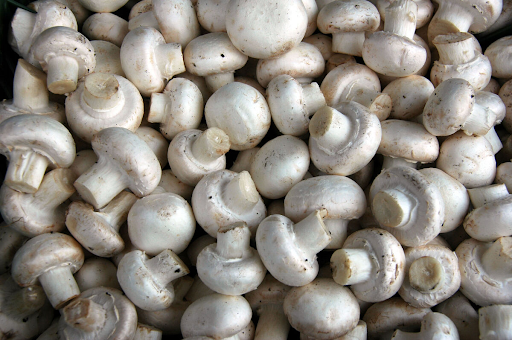A Beginner’s Guide to Growing Mushrooms: Choosing the Right Mushroom Seeds
Mushrooms are a culinary delight, packed with flavor and nutrients. For those interested in gardening, growing mushrooms can be a rewarding and exciting venture. Unlike traditional crops, mushrooms do not grow from seeds; instead, they propagate from spores or spawn. However, the term mushroom seeds is often used colloquially to refer to mushroom spawn, which is a mycelium culture used to cultivate mushrooms. In this guide, we will explore the basics of choosing the right mushroom seeds (spawn), factors to consider, and tips for successful mushroom cultivation.
Understanding Mushroom Types
Before diving into mushroom cultivation, it’s essential to understand the different types of mushrooms. Some popular varieties include:
- Button Mushrooms (Agaricus bisporus): These are the most commonly consumed mushrooms worldwide. They are easy to grow and require minimal space.
- Oyster Mushrooms (Pleurotus ostreatus): Known for their delicate texture and mild flavor, oyster mushrooms are versatile and can be grown on various substrates.
- Shiitake Mushrooms (Lentinula edodes): These mushrooms are rich in flavor and have numerous health benefits. They require specific conditions to grow, making them a bit more challenging for beginners.
- Lion’s Mane (Hericium erinaceus): Recognized for its unique appearance and health benefits, Lion’s Mane mushrooms can be grown on hardwood logs or sawdust.
- Portobello (Agaricus bisporus): A mature version of button mushrooms, portobello mushrooms are large and meaty, perfect for grilling.
When selecting mushroom seeds, consider which variety appeals to you most, both in terms of flavor and growing requirements.
Choosing the Right Mushroom Spawn
1. Source Quality Spawn
When it comes to mushroom cultivation, the quality of the spawn is paramount. Always purchase mushroom seeds from reputable suppliers who offer certified, disease-free spawn. Look for suppliers that specialize in mycology and have a good reputation among mushroom cultivators. Local gardening stores or online mushroom supply companies can be excellent resources.
2. Consider Your Growing Environment
Mushrooms thrive in specific environmental conditions. Before selecting your mushroom seeds, assess your growing environment:
- Temperature: Most mushrooms prefer a temperature range between 55°F and 75°F (13°C to 24°C). Research the temperature requirements for the specific mushroom variety you choose.
- Humidity: Mushrooms require high humidity levels, ideally between 80% and 90%. This can be achieved through misting or using humidity trays.
- Light: While some mushrooms grow well in low light, others benefit from indirect sunlight. Ensure that your chosen variety aligns with your growing conditions.
3. Select the Right Substrate
The substrate is the material on which mushrooms grow, and it plays a crucial role in successful cultivation. Different mushroom varieties thrive on different substrates. Here are some popular options:
- Straw: Ideal for oyster mushrooms, straw is an affordable and easy-to-find substrate. It must be pasteurized to eliminate competing organisms before use.
- Coffee Grounds: Used coffee grounds are an excellent substrate for oyster mushrooms and can be sourced from local coffee shops.
- Wood Logs: Shiitake and Lion’s Mane mushrooms grow well on hardwood logs. This method requires patience, as it can take several months for mushrooms to fruit.
- Saw Dust: A common substrate for many mushroom varieties, sawdust is usually supplemented with nutrients to enhance growth.
Steps to Start Growing Mushrooms
- Prepare the Substrate: Ensure your substrate is clean and free of contaminants. Depending on the material, you may need to pasteurize it.
- Inoculate the Spawn: After preparing your substrate, mix in your mushroom seeds (spawn) evenly. This allows the mycelium to colonize the substrate effectively.
- Create the Right Environment: Place your inoculated substrate in a suitable container (like plastic bags or trays) and ensure it remains in a controlled environment with the right temperature and humidity.
- Monitor Growth: Regularly check for signs of colonization. Mycelium will appear as white strands throughout the substrate. This process can take anywhere from a few weeks to a couple of months, depending on the variety.
- Induce Fruiting: Once the substrate is fully colonized, you can initiate fruiting by exposing it to light, lowering humidity slightly, and adjusting temperature conditions based on the mushroom variety.
- Harvesting: Mushrooms are typically ready to harvest when their caps have fully expanded but before they begin to release spores. Cut them at the base and enjoy your home-grown delicacies!
Conclusion
Growing mushrooms can be a fun and rewarding experience for beginners. By choosing the right mushroom seeds (spawn) and providing the ideal growing conditions, you can enjoy a bountiful harvest of fresh, home-grown mushrooms. Additionally, if you’re interested in diversifying your garden, consider exploring ornamental grass seeds, which can add beauty and texture to your landscape. With some research and patience, you’ll be well on your way to becoming a successful mushroom cultivator!






